Best High-End Receivers in 2024 Premium AVRs When the question of choosing the best High-End receiver arises then there is no way to proceed without comprehensive counsel.
When the question of choosing the best High-End receiver arises, then there is no way to proceed without comprehensive counsel. February 1, 2024January 31, 2024by Frederick Douglass
| Name |
Channels |
Power output |
HDMI in/out |
Bluetooth/Wi-Fi |
Review |
| Denon AVR-X6700H best 11.2 receiver |
11.2 |
140W/8 Ohm, 175W/6 Ohm |
8/3 |
yes/yes |
Review |
| Yamaha RX-A8A 11.2 Yamaha receiver |
11.2 |
150W/8 Ohm |
7/3 |
yes/yes |
Review |
| Denon AVR-X8500HA best 13.2 receiver |
13.2 |
150W/8 Ohm, 190W/6 Ohm |
8/3 |
yes/yes |
Review |
| Marantz SR8015 13.2 Marantz receiver |
11.2 |
140W/8 Ohm, 175W/6 Ohm |
8/3 |
yes/yes |
Review |
How I tested high-end home theater receivers
Since high-end home theater receivers are pretty complex devices, testing should cover all possible aspects. And to test the surrounding sound, I chose the Inception movie.I’m sure you immediately imagined the whole gamut of sound and visual effects that are in this masterpiece.
For the test of musical capabilities, a whole list of diverse music was selected that helped me evaluate all the nuances of sound.
- Johnny Cash – Hurt – Spotify
- Radiohead – The National Anthem (CD player)
- Led Zeppelin – Ramble On (CD player)
- Roy Orbison — Ride Away (CD player)
- Mahler – Symphony No.2 (CD player)
- Jacky Terrasson – Reach (CD player)
- Mark Nauseef – With Space in Mind (CD player)
Here is a list of optional equipment that my multimedia system consisted of:
Since high-end home theater receivers are pretty complex devices, testing should cover all possible aspects. And to test the surrounding sound, I chose the Inception movie.I’m sure you immediately imagined the whole gamut of sound and visual effects that are in this masterpiece.
For the test of musical capabilities, a whole list of diverse music was selected that helped me evaluate all the nuances of sound.
- Johnny Cash – Hurt – Spotify
- Radiohead – The National Anthem (CD player)
- Led Zeppelin – Ramble On (CD player)
- Roy Orbison — Ride Away (CD player)
- Mahler – Symphony No.2 (CD player)
- Jacky Terrasson – Reach (CD player)
- Mark Nauseef – With Space in Mind (CD player)
Here is a list of optional equipment that my multimedia system consisted of:
Article navigation- 11.2 channel receivers.
-
Denon AVR-X6700H.
-
Yamaha RX-A8A.
-
13.2 channel receivers.
-
Denon AVR-X8500HA.
-
Marantz SR8015.
-
Buyer’s guide.
-
Discontinued models
-
Marantz AV8805.
-
Yamaha CX-A5200.
Best 11.2 receiver reviews
Denon AVR-X6700H – best 11.2 receiver

In 2020, Denon released one of their most famous premium receivers, which tops my chart by combining price/quality/capability. The Denon AVR-X6700H is an 11-channel AVR whose main advantage is expanding up to 13 channels. So you get more for less (the lowest price in this review). For example, the Yamaha RX-A8A, which is in second place in this category, does not have such features. But Marantz SR8015, which in my selection fell into the category of 13-channel receivers, is exactly such a device, but it costs many times more.
The Denon company doesn’t care much about design, so the AVR-X6700H is rather bland. Its main competitors, Yamaha RX-A8A and Marantz SR8015, are very beautiful (if it matters to you). But I think that while maintaining a decent price and pronounced advantages, it’s not worth looking at (for me). Nevertheless, the design has a sense of quality, from the impressive weight of 33 pounds to the fact that the main controls are hidden under a metal cover. There is no feeling of cheapness when I touch it. I love its bright LCD, where I can see everything from afar. And the number of connections is staggering, but that’s the privilege of high-end receivers, and in my review, everyone boasts that you’re building an extensive system for years to come.

The unit contains an amplifier of 11 channels and dual subwoofer output with 140W/8 Ohm or 175W/6 Ohm per channel. However, the most exciting feature of X6700H in direct comparison with above -mentioned Marantz SR8015 is the DAC design. It consists of AL 32 (high definition filter), two dual SHARC chips, and DSP cores. Such design allows using Dolby Atmos and DTS: X more efficiently. Moreover, the unit has Dolby Atmos Height and DTS Virtual: X and even decodes Auro 3D tracks for ceiling speaker’s virtualization.
And then, I will consider a video path that meets all modern requirements. The Denon AVR-X6700H works with video streams of 8K/60 Hz or 4K/120 Hz. The receiver aims to modern next-generation video processing with Dolby Vision and HDR10 + technologies. Furthermore, the current HDCP 2.3 standard applies to all HDMI connections. But only 1 of the inputs is version 2.1 and works at 8K resolution, which is a disadvantage over the Yamaha RX-A8A. Since it’s not the only model in my selection with such capabilities, I guess I’ll forgive this omission. After all, you can use the highest possible video available today, although I personally consider it overrated (4K is more than enough for most viewers).
Additionally, it supports other streaming services, such as Spotify, Amazon Music HD, Tidal, and Deezer. I was even able to voice control the receiver using Google Assistant, Alexa, or Siri.

While watching the movie, I noticed good dynamics in this receiver. The sound is perceived as controlled, as well organized. The additional volume of bass in some scenes gets some hum in the room. However, it helps to feel a complete and realistic reproduction of voices and, if necessary, is quite capable of shaking the room with its power. However, when listening to music, everything is a little different.
The sound is compelling. Denon is incredibly precise and sure about this power. And what produced significant discomfort was the bass favored balance of the sound stage. Although all voices and dialogs were well represented, too many low frequencies were observed.
You might even estimate the model’s audio capabilities due to PureDirect mode. The instrumental section of the songs feels just like a balanced whole. Instruments do not blend into cacophonies, but they are distinctly distinctive. In addition, the detail and expressive dynamics of the sound stage impressed me.
This one was no exception since I often recommend front speakers in my reviews. And for Denon (once again), the KEF Q750 is a perfect match. They’re not cheap, but we’re talking about a premium home theater system. It would be a sin to advise you something primitive. So, these speakers bring out the warmth and dynamics of the AVR-X6700H to the fullest. Not a single distortion, the clarity of the artist’s vocals is amazing, as if the musicians were directly in my studio.
Denon AVR-X6700H becomes the best 11.2 receiver of my review for several reasons. First, for a reasonable price (the lowest price in my rating), you get a high-end receiver with 13 channels of amplification (if you add an external amplifier). Secondly, its sound is amazing: clear, rich, detailed, and bright. You can watch an 8K video (though only on one of the inputs), but add IMAX to any video, and you’ll be happy. The receiver is great for video and music, so you get a complete all-in-one system.
It’s very well made, though it may not be eye-catching on the outside, but its internals are worthy of the audio-savvy user (excellent DAC design). You can even save two presets with different sound settings. Console gaming is no problem. Listening to streaming music or controlling your voice – no problem either! This small AVR with bison power (140W) can give you everything you’ve dreamed of.
| Power |
- Number of channels: 9.4 - Power output: - 105W/8 Ohm (20 Hz–20 Khz, 0.08% 2ch drive) - 135W/6 Ohm (1 kHz, 0.7% 2ch drive) |
| HDMI features |
- HDMI inputs/outputs: 6/3 - HDMI pass-through: 4K/120Hz, 8K/60Hz |
| Video features |
- HDMI ARC/eARC/CEC: yes/yes/yes - HDR support: HDR 10+, Dolby Vision, Dynamic HDR, HLG - HDMI upconversion: yes (analog to HDMI) - HDMI upscaling: yes (up to 8K) |
| Network |
- Wi-Fi: yes - Bluetooth: yes - Ethernet: yes - AirPlay: yes (AirPlay2) - Streaming services: Spotify, Pandora, Amazon Music HD, TIDAL, Deezer, and others - Assistant support: Google Assistant, Alexa, Apple HomePod |
| Surround sound processing |
- Dolby Atmos/DTS:X: yes/yes - Dolby: Dolby TrueHD, Dolby Atmos Height Virtualization, Dolby Atmos Music, Dolby Surround - DTS: DTS HD Master, DTS Neural:X, DTS Virtual:X |
Pros
- 11-channel receiver with expandable up to 13.2 channels.
- Excellent DAC design (it consists of AL 32 and two dual SHARC chips and DSP cores).
- Cinematic quality image thanks to IMAX support.
- Two presets with different sound settings can be stored in the receiver’s memory.
- Suitable for gaming, music, and movies.
Cons
- Low frequencies are too pronounced.
Check price on AmazonB&H sound VideoBest Buy
Yamaha RX-A8A

In the second place, we meet the handsome Yamaha RX-A8A. Surprisingly, the flagship model of the Aventage lineup and the whole model range of the brand cannot become bigger than it is. That is, unlike Denon AVR-X6700H, it is just an 11-channel receiver. But where there are minuses, there are also pluses, I’ll tell you and proceed to a detailed description.
So, in front of us is an incredibly beautiful (did I mention?) AVR with a glossy surface and a built-in LCD underneath. But I just hate this design (don’t throw rotten apples at me, please). I’ll explain. Glossy means dust, fingerprints, and constantly walking around the device with a cloth in hand. You can’t see the LCD! Something is glowing there that you can see from a few feet away. But all of this I can forgive (especially given the subjectivity of the comments), as there are outstanding internal components in this 47.2-pound monster. Yamaha even added a fifth foot on the bottom, apparently to keep the unit from flying away from its power.
When we talk about a premium receiver, it’s only fair that we expect to have everything available to us, what I mean by that. First, you can spread the video into 3 zones. Second, this is the only receiver of my rating that has all inputs (7) supporting 8K video. Not surprising since this is the “youngest” AVR, released in 2021. Having version 2.1 connectors also means all the features you need for an unrivaled gaming experience. I won’t list them; just look at the spec sheet. I’ll just say that while I was testing Forza Horizon 4 in the studio, I completely forgot about time. The picture is amazing, and the sound just killed me.

It’s not hard to guess that surround sound is also available for 4 zones. Spent once, created a movie theater for everyone in the family. The HD3’s CINEMA DSP technology creates unique acoustic effects, and if you watch a musical or concert recording with it, it feels like you are actually in a theater. Also built into the DSP is Artificial Intelligence (AI) technology. It is unique in that it recognizes individual details of the sound stream in real-time, analyzes them, and produces the optimal ratio for the viewer. But if you decide to use the Yamaha RX-A8A in just one room, you’re in for 150 watts (8 ohms, 20Hz-20kHz, 0.06% THD, 2ch) of pure, crystal-clear sound. Only the Denon AVR-X8500HA is capable of such power in my selection, but it has 13 built-in channels.
Well, I think Yamaha should have revised their YPAO calibration system long ago. Still, this model has an advanced version of R.S.C. Superior YPAO with 3D, multi-point sensing, accurate E.Q., and bass mode. It calibrated the sound very well, but Denon (and Marantz) are way ahead in that sense. Still, I have a fine ear and am picky. Plus, checking the results in the studio has more “ideal” conditions with no room for specifics. Chances are you’ll be fine with it.

Dolby Atmos is no surprise to anyone today, especially since there are surround sound formats that do not require built-in ceiling speakers, like Auro 3D. But I’ve certainly tested them all. Magical, fantastic, and uncompromising are the words that come to mind. But the thing is, I’m looking at top Hi-Fi receivers in the premium segment, and that can be said of them all. Nevertheless, there is indeed some difference with the CINEMA DSP HD3 (as I mentioned before), which you can appreciate when watching sports programs or concerts.
As for the stereo, everything is expectedly great. The built-in MusicCast multi-room audio, AirPlay 2, and streaming services work flawlessly. But I’ll never prefer the cool sound of the RX-A8A to the bright sound of the Denon or the warm sound of the Marantz. There’s a phono input, but I don’t understand analog sound without its naturalness. Nevertheless, don’t listen to me until you’ve tried it yourself. Because that’s a highly subjective attitude. The receiver is wonderful in terms of component quality and signal transmission, and the brand has a lot of fans who just had this crystal-clear sound.
Yamaha RX-A8A – the brand’s flagship receiver will be a terrific center of a home system of cinema, music, or multi-room video/audio (broadcasts surround sound to 4 zones and video to 3). It will serve for years to come, delighting you with its looks and state-of-the-art features. But it does not get to the first place of my selection because, in my opinion, it is inferior to the winner, Denon AVR-X6700H.
First, it is the only receiver without the possibility to expand the system up to 13 channels. It also sounds peculiarly cold, which makes it stand out, but it won’t suit all users. However, Yamaha has unique developments, CINEMA DSP HD3 and Surround AI, that take movie watching to the highest level.
| Power |
- Number of channels: 11.2 - Power output: - 150W/8 Ohm (20 Hz–20 Khz, 0.06% 2ch drive) |
| HDMI features |
- HDMI inputs/outputs: 7/3 - HDMI pass-through: 4K/120Hz, 8K/60Hz |
| Video features |
- HDMI ARC/eARC/CEC: yes/yes/yes - HDR support: HDR 10+, Dolby Vision, Dynamic HDR, HLG - HDMI upconversion: yes (analog to HDMI) - HDMI upscaling: yes (up to 8K) |
| Network |
- Wi-Fi: yes - Bluetooth: yes - Ethernet: yes - AirPlay: yes (AirPlay2) - Streaming services: Spotify, Pandora, Amazon Music HD, TIDAL, Deezer, and others - Assistant support: Google Assistant, Alexa, Apple HomePod |
| Surround sound processing |
- Dolby Atmos/DTS:X: yes/yes - Dolby: Dolby TrueHD, Dolby Digital Plus, Dolby Atmos Height Virtualization, Dolby Surround - DTS: DTS HD Master |
Pros
- Massive 47.2 lb. weight and extra anti-resonance design.
- Multi-room video for 3 zones and surround sound for 4 zones.
- All HDMI ports support 8K video.
- Unique CINEMA DSP HD3 technology for concert sound.
- Artificial Intelligence (AI) technology built into the DSP analyzes and optimizes surround sound in real-time.
Cons
- It has only 11 channels of amplification, and the system cannot be expanded as with the Denon AVR-X6700H.
- The glossy surface requires maintenance.
- The receiver has a cold, transparent sound that may not suit all users.
Check price on Amazon
Best 13.2 receiver reviews
Denon AVR-X8500HA – best 13-channel receiver

Denon has the only full-fledged 13.2-channel AVR-X8500HA receiver in its lineup, which is also the only one on my list. Being released in 2021, this model does not lose relevance and looks confidently next to even more modern competitors. So, let’s take a closer look at what makes it so good.
First of all, the big size of this “monster” (W x D x H) is striking: 17.1 x 18.6 x 7.7 inches. The device looks solid and strict. Even without a close inspection, you can see the high quality of the assembly and the thoughtfulness of every detail. In the center is a big rectangular display, a hinged panel under it (some of the functionality is hidden underneath), and on the sides, there are big round controls. Everything is made conveniently, clearly, and without unnecessary elements. It has to be said that it doesn’t differ much from the Denon AVR-X6700H, except in size. But the weight of an incredible 52 pounds should tell you a lot. Remember one truth: the heavier the receiver’s weight, the more quality components are used in its design. DACs, processors, and even gold-plated screws matter in the end, affecting the processing of the incoming signal and the quality of its transmission. Everything is hidden from your eyes, but for which you pay such a high price in the end (AVR-X8500HA is the most expensive in my review).
The main feature of the X8500HA is a 13-channel audio pre-processing (two dual-core DSP Griffin Line and 4-channel DDR3 memory) . Thirteen audio pre-out outputs are provided – if desired, each channel can be independently amplified by a separate external power amplifier. All calculations are performed in 32-bit format by 8 audiophile AKM AK4490EQ Velvet Sound DACs from Asahi Kasei.

The receiver’s power amplification path is 13-channel (13 discrete power amplifiers using custom DHCT – Denon High Current Transistors). This gives compatibility with all modern 3D sound formats. And depending on what type of content is used (Dolby Atmos, DTS:X, or Auro-3D), the receiver will independently (or on your command) assign the optimal configuration from all the speakers connected to it.
For advanced audiophiles, the AVR-X8500HA offers another unique option. This is the connection of a classic 5.1-channel sound environment by bi-amping – for the fullest potential of each individual speaker system.
In terms of sound, with X8500HA, you can experiment with different configurations (7.2.6 / 9.2.4 / 13.1 / 13.2 ). This model offers really almost unlimited functionality. There is support for two additional zones of stereo sound, but for me, it’s not enough for today. The Yamaha RX-A8A offers more (4). The Denon AVR-X8500HA is fully compatible with the latest HDMI and HDCP 2.2 standards (on all eight HDMI inputs and three HDMI outputs). The device supports 4K Ultra HD 60Hz picture, 4:4:4 color resolution, High Dynamic Range (HDR), and BT.2020 extended color space. 8K is only supported on 1 input, but that’s already the norm for my set. Therefore, you can safely connect the latest games consoles, projectors, etc., to X8500HA.

Of course, Wi-Fi, Bluetooth, Apple AirPlay, and HEOS wireless multiroom streaming are supported. This means you can listen to music in different rooms, from any source (Internet, mobile devices, network drives…), in any format (DSD, FLAC, ALAC, and WAV).
I would like to note that this receiver requires no special efforts for proper setup. The calibration system creates an exceptionally balanced picture, which will fully satisfy the needs of even a sophisticated user. The Denon AVR-X8500HA is equipped with the Audyssey MultEQ XT32 calibration system. A special measurement microphone is included. You just need to connect it to the receiver, run the automatic tuning system and follow the “wizard” instructions on the screen. Then the device will automatically determine the speakers’ configuration and adjust each speaker’s operation.
As far as sound quality is concerned, it provides impressively clean, clear, good-quality sound on its own. And then it all depends on the content, your choice of speakers, and your experience. With this receiver, you can and should connect speakers of “above average” class – especially on the front.
The Denon AVR-X8500HA gives music fans musicianship, beautiful details, and drive without any “digital flavor”. At the same time, it will provide the feeling of “total flight” and impressive “depth of immersion” for movie fans.
In my opinion, this is one of the coolest cinema receivers for those who dream of “complete immersion” in the abyss of action scenes. The clarity, detail, and expressiveness of multi-channel soundtracks are definitely impressive. I consider Denon AVR-X8500H the best 13-channel home theater receiver, and I am sure thousands of happy owners of this device will agree with me. The quality of its construction and internal components is amazing, and it will serve its owner for a long time. It’s extremely easy to operate, and the calibration system requires no knowledge or effort. It has so many connectivity options that you can connect 20-year-old equipment or the latest gadgets, all to create a huge all-in-one system.
It’s a bit behind in the HDMI area, having only 1 input for 8K video, but this will confuse a few people, as there is little content in this quality, and in general, its importance is exaggerated. And audio is only streamed for 2 zones, so if you’ve been looking for a whole-house theater, look at the Yamaha RX-A8A.
| Power |
- Number of channels: 13.2 - Power output: - 150W/8 Ohm (20 Hz–20 Khz, 0.08% 2ch drive) - 190W/6 Ohm (1 kHz, 0.7% 2ch drive) |
| HDMI features |
- HDMI inputs/outputs: 8/3 - HDMI pass-through: 4K/120Hz, 8K/60Hz |
| Video features |
- HDMI ARC/eARC/CEC: yes/yes/yes - HDR support: HDR 10+, Dolby Vision, Dynamic HDR, HLG - HDMI upconversion: yes (analog to HDMI) - HDMI upscaling: yes (up to 8K) |
| Network |
- Wi-Fi: yes - Bluetooth: yes - Ethernet: yes - AirPlay: yes (AirPlay2) - Streaming services: Spotify, Pandora, Amazon Music HD, TIDAL, Deezer, and others - Assistant support: Google Assistant, Alexa, Apple HomePod |
| Surround sound processing |
- Dolby Atmos/DTS:X: yes/yes - Dolby: Dolby TrueHD, Dolby Atmos Height Virtualization, Dolby Atmos Music, Dolby Surround - DTS: DTS HD Master, DTS Neural:X, DTS Virtual:X |
Pros
- The review’s only full-featured 13-channel receiver.
- The heaviest in the rating (52 pounds) speaks to the quality of the components used.
- Audyssey MultEQ XT32 is simple and calibrates sound exceptionally well.
- The widest range of connectivity options.
- Phenomenal flexibility and versatility across genres.
Cons
- Surround sound is only available for 2 zones.
Check price on AmazonYou can also check the best denon av receiver.
Marantz SR8015

Rounding out our best High-End receivers review with the Marantz SR8015. This model, like the entire top series for this brand, is designed specifically to create a truly superior-sounding home multimedia system. Let’s first look at how powerful this “beast” is.
It’s hard to single out the best quality design when considering the premium segment. That’s why I’m focusing on the design. In SR8015, I strongly dislike the small round screen (they make it for all new models now, because surely – it’s beautiful), but there is at least a full LCD under a metal cover here. Otherwise, it’s similar to the Denon (or any of the ones shown) but somehow more luxurious. Chrome legs, excellent ventilation (it should be, because the receiver is very powerful), great smooth controls and buttons – everything is at the highest level.
The SR8015 has 11 amplification channels, each delivering up to 140 watts at 8 ohms over the entire audible frequency range; the THD at two-channel loads is minimal at 0.05%. Gain units can be set to work optimally with 8, 6, or 4-ohm loads on all channels. It is possible that some speakers will not work correctly with this receiver somewhere, but in my tests, it easily coped with various equipment. Moreover, the unit has 13.2-channel processing in surround decoder mode. Such significant power is similar to the direct competitor – Denon AVR-X6700H but with a more powerful amplifier.

Marantz SR8015 operates with a fascinating tract structure based on HDAM modules and AKM AK4458, the 32-bit DAC. That is similar to Yamaha CX-A5200 (you’ll find it in the Discontinued section), where I noticed the High-End home theater processor – ESS SABER PRO Premier. However, the SR8015 was improved in sound by the HDAM modules.
As for the surround sound, everything is on the proper level. The receiver supports Dolby Atmos, DTS: X Pro, Auro 3D, and DTS Virtual: X ceiling speaker virtualization technology. Not surprising since such a range of decoders is a standard set for High-End AV receivers. Among the innovations, you will find the IMAX Enhanced certification. I can’t say it’s a key advantage or anything extraordinary, but it’s definitely a nice bonus.
The SR8015 is richly equipped with composite and component video inputs. It has 8 HDMI inputs and 3 outputs with HDCP2.3, CEC and eARC support. One of the HDMI inputs supports 8K video at 50/60 fps (standard for my selection, only on 1 input) and 4K at up to 100/120 fps. In addition, there are many other connections, including 8 analog stereo inputs, one of which is located on the front panel, and a phono input suitable for players with MM cartridges. Finally, there are 2 optical digital audio inputs and a couple of coaxial inputs. And, of course, as it should be the best high-end AV receiver, along with Bluetooth, there are many networking options. Two connectors on the rear panel are designed for antennas, providing a strong reception of signals via Bluetooth and Wi-Fi. The Bluetooth channel goes both ways: you can connect a smartphone to the amplifier to play music or vice versa.

The networking and Bluetooth capabilities are fairly standard for a Marantz model; they are provided by the built-in HEOS module, as well as several additional inputs. HEOS allows you to surround any room in your home with compatible speakers and wirelessly connect your audio components. So anywhere in your home, you can listen to music from your favorite streaming services: Spotify, Amazon Music, TIDAL, Deezer, and more.
The first time you turn on your Marantz SR8015, you’re advised to take advantage of the “setup wizard”. It offers detailed advice on connecting the speaker cables to the terminals, but you can skip the sections you’re already familiar with. Eventually, you get to the Audyssey MultEQ XT32 auto-calibration system. It handled my set of speakers with no problem, and I’m sure you won’t have a problem with your equipment. During testing, I used the 5.1.4 configuration for the most part and was completely satisfied with the result. I barely used half the power of the SR8015, which I found to be truly infinite. Under its control, my acoustics worked as organically as possible. The surround panorama was truly magnificent, including the effects created overhead.
I listened to the stereo recordings in “Pure” mode, which disables all processing tools – EQ, crossovers, etc. I had a lot of fun. Yes, it was that audiophile sound quality.
After testing, I can confidently call this model worthy of the review and the category of 13-channel receivers. However, you should realize that it is not a full-fledged 13 channels, and you will have to buy an additional amplifier, which will increase the already very high price of the Marantz SR8015 (cost was almost as much as the Denon AVR-X8500HA, now the price has been reduced). So think twice, because we have Denon AVR-X6700H with the same parameters and lower price in our rating.
Those not used to saving money should know that Marantz is today’s most elegant, highest-quality receiver for home theaters. You’re paying for things you can’t see, but they are the things that affect the sound. Yes, the Denon AVR-X8500HA boasts identical technology (HEOS system, calibration system, DAC) since the brands merged not too long ago. But with Marantz, you always have a more luxurious approach to things.
| Power |
- Number of channels: 11.2 - Power output: - 140W/8 Ohm (20 Hz–20 Khz, 0.08% 2ch drive) - 175W/6 Ohm (1 kHz, 0.7% 2ch drive) |
| HDMI features |
- HDMI inputs/outputs: 8/3 - HDMI pass-through: 4K/120Hz, 8K/60Hz |
| Video features |
- HDMI ARC/eARC/CEC: yes/yes/yes - HDR support: HDR 10+, Dolby Vision, Dynamic HDR, HLG - HDMI upconversion: yes (analog to HDMI) - HDMI upscaling: yes (up to 8K) |
| Network |
- Wi-Fi: yes - Bluetooth: yes - Ethernet: yes - AirPlay: yes (AirPlay2) - Streaming services: Spotify, Pandora, Amazon Music HD, TIDAL, Deezer, and others - Assistant support: Google Assistant, Alexa, Apple HomePod |
| Surround sound processing |
- Dolby Atmos/DTS:X: yes/yes - Dolby: Dolby TrueHD, Dolby Atmos Height Virtualization, Dolby Atmos Music, Dolby Surround - DTS: DTS HD Master, DTS Neural:X, DTS Virtual:X, DTS:X Pro |
Pros
- 13.2 channel audiophile processor on-board.
- HDAM modules significantly improve the sound.
- High-quality parts and assembly.
- Excellent sound when transmitting the signal over the network.
Cons
- It’s not a full 13-channel system, but it costs almost as much as the Denon AVR-X8500HA.
Check price on Amazon
Denon AVR-X6700H – best 11.2 receiver

In 2020, Denon released one of their most famous premium receivers, which tops my chart by combining price/quality/capability. The Denon AVR-X6700H is an 11-channel AVR whose main advantage is expanding up to 13 channels. So you get more for less (the lowest price in this review). For example, the Yamaha RX-A8A, which is in second place in this category, does not have such features. But Marantz SR8015, which in my selection fell into the category of 13-channel receivers, is exactly such a device, but it costs many times more.
The Denon company doesn’t care much about design, so the AVR-X6700H is rather bland. Its main competitors, Yamaha RX-A8A and Marantz SR8015, are very beautiful (if it matters to you). But I think that while maintaining a decent price and pronounced advantages, it’s not worth looking at (for me). Nevertheless, the design has a sense of quality, from the impressive weight of 33 pounds to the fact that the main controls are hidden under a metal cover. There is no feeling of cheapness when I touch it. I love its bright LCD, where I can see everything from afar. And the number of connections is staggering, but that’s the privilege of high-end receivers, and in my review, everyone boasts that you’re building an extensive system for years to come.

The unit contains an amplifier of 11 channels and dual subwoofer output with 140W/8 Ohm or 175W/6 Ohm per channel. However, the most exciting feature of X6700H in direct comparison with above -mentioned Marantz SR8015 is the DAC design. It consists of AL 32 (high definition filter), two dual SHARC chips, and DSP cores. Such design allows using Dolby Atmos and DTS: X more efficiently. Moreover, the unit has Dolby Atmos Height and DTS Virtual: X and even decodes Auro 3D tracks for ceiling speaker’s virtualization.
And then, I will consider a video path that meets all modern requirements. The Denon AVR-X6700H works with video streams of 8K/60 Hz or 4K/120 Hz. The receiver aims to modern next-generation video processing with Dolby Vision and HDR10 + technologies. Furthermore, the current HDCP 2.3 standard applies to all HDMI connections. But only 1 of the inputs is version 2.1 and works at 8K resolution, which is a disadvantage over the Yamaha RX-A8A. Since it’s not the only model in my selection with such capabilities, I guess I’ll forgive this omission. After all, you can use the highest possible video available today, although I personally consider it overrated (4K is more than enough for most viewers).
Additionally, it supports other streaming services, such as Spotify, Amazon Music HD, Tidal, and Deezer. I was even able to voice control the receiver using Google Assistant, Alexa, or Siri.

While watching the movie, I noticed good dynamics in this receiver. The sound is perceived as controlled, as well organized. The additional volume of bass in some scenes gets some hum in the room. However, it helps to feel a complete and realistic reproduction of voices and, if necessary, is quite capable of shaking the room with its power. However, when listening to music, everything is a little different.
The sound is compelling. Denon is incredibly precise and sure about this power. And what produced significant discomfort was the bass favored balance of the sound stage. Although all voices and dialogs were well represented, too many low frequencies were observed.
You might even estimate the model’s audio capabilities due to PureDirect mode. The instrumental section of the songs feels just like a balanced whole. Instruments do not blend into cacophonies, but they are distinctly distinctive. In addition, the detail and expressive dynamics of the sound stage impressed me.
This one was no exception since I often recommend front speakers in my reviews. And for Denon (once again), the KEF Q750 is a perfect match. They’re not cheap, but we’re talking about a premium home theater system. It would be a sin to advise you something primitive. So, these speakers bring out the warmth and dynamics of the AVR-X6700H to the fullest. Not a single distortion, the clarity of the artist’s vocals is amazing, as if the musicians were directly in my studio.
Denon AVR-X6700H becomes the best 11.2 receiver of my review for several reasons. First, for a reasonable price (the lowest price in my rating), you get a high-end receiver with 13 channels of amplification (if you add an external amplifier). Secondly, its sound is amazing: clear, rich, detailed, and bright. You can watch an 8K video (though only on one of the inputs), but add IMAX to any video, and you’ll be happy. The receiver is great for video and music, so you get a complete all-in-one system.
It’s very well made, though it may not be eye-catching on the outside, but its internals are worthy of the audio-savvy user (excellent DAC design). You can even save two presets with different sound settings. Console gaming is no problem. Listening to streaming music or controlling your voice – no problem either! This small AVR with bison power (140W) can give you everything you’ve dreamed of.
| Power |
- Number of channels: 9.4 - Power output: - 105W/8 Ohm (20 Hz–20 Khz, 0.08% 2ch drive) - 135W/6 Ohm (1 kHz, 0.7% 2ch drive) |
| HDMI features |
- HDMI inputs/outputs: 6/3 - HDMI pass-through: 4K/120Hz, 8K/60Hz |
| Video features |
- HDMI ARC/eARC/CEC: yes/yes/yes - HDR support: HDR 10+, Dolby Vision, Dynamic HDR, HLG - HDMI upconversion: yes (analog to HDMI) - HDMI upscaling: yes (up to 8K) |
| Network |
- Wi-Fi: yes - Bluetooth: yes - Ethernet: yes - AirPlay: yes (AirPlay2) - Streaming services: Spotify, Pandora, Amazon Music HD, TIDAL, Deezer, and others - Assistant support: Google Assistant, Alexa, Apple HomePod |
| Surround sound processing |
- Dolby Atmos/DTS:X: yes/yes - Dolby: Dolby TrueHD, Dolby Atmos Height Virtualization, Dolby Atmos Music, Dolby Surround - DTS: DTS HD Master, DTS Neural:X, DTS Virtual:X |
Pros
- 11-channel receiver with expandable up to 13.2 channels.
- Excellent DAC design (it consists of AL 32 and two dual SHARC chips and DSP cores).
- Cinematic quality image thanks to IMAX support.
- Two presets with different sound settings can be stored in the receiver’s memory.
- Suitable for gaming, music, and movies.
Cons
-
Low frequencies are too pronounced.
-
11-channel receiver with expandable up to 13.2 channels.
-
Excellent DAC design (it consists of AL 32 and two dual SHARC chips and DSP cores).
-
Cinematic quality image thanks to IMAX support.
-
Two presets with different sound settings can be stored in the receiver’s memory.
-
Suitable for gaming, music, and movies.
-
Low frequencies are too pronounced.
Check price on AmazonB&H sound VideoBest Buy
Yamaha RX-A8A

In the second place, we meet the handsome Yamaha RX-A8A. Surprisingly, the flagship model of the Aventage lineup and the whole model range of the brand cannot become bigger than it is. That is, unlike Denon AVR-X6700H, it is just an 11-channel receiver. But where there are minuses, there are also pluses, I’ll tell you and proceed to a detailed description.
So, in front of us is an incredibly beautiful (did I mention?) AVR with a glossy surface and a built-in LCD underneath. But I just hate this design (don’t throw rotten apples at me, please). I’ll explain. Glossy means dust, fingerprints, and constantly walking around the device with a cloth in hand. You can’t see the LCD! Something is glowing there that you can see from a few feet away. But all of this I can forgive (especially given the subjectivity of the comments), as there are outstanding internal components in this 47.2-pound monster. Yamaha even added a fifth foot on the bottom, apparently to keep the unit from flying away from its power.
When we talk about a premium receiver, it’s only fair that we expect to have everything available to us, what I mean by that. First, you can spread the video into 3 zones. Second, this is the only receiver of my rating that has all inputs (7) supporting 8K video. Not surprising since this is the “youngest” AVR, released in 2021. Having version 2.1 connectors also means all the features you need for an unrivaled gaming experience. I won’t list them; just look at the spec sheet. I’ll just say that while I was testing Forza Horizon 4 in the studio, I completely forgot about time. The picture is amazing, and the sound just killed me.

It’s not hard to guess that surround sound is also available for 4 zones. Spent once, created a movie theater for everyone in the family. The HD3’s CINEMA DSP technology creates unique acoustic effects, and if you watch a musical or concert recording with it, it feels like you are actually in a theater. Also built into the DSP is Artificial Intelligence (AI) technology. It is unique in that it recognizes individual details of the sound stream in real-time, analyzes them, and produces the optimal ratio for the viewer. But if you decide to use the Yamaha RX-A8A in just one room, you’re in for 150 watts (8 ohms, 20Hz-20kHz, 0.06% THD, 2ch) of pure, crystal-clear sound. Only the Denon AVR-X8500HA is capable of such power in my selection, but it has 13 built-in channels.
Well, I think Yamaha should have revised their YPAO calibration system long ago. Still, this model has an advanced version of R.S.C. Superior YPAO with 3D, multi-point sensing, accurate E.Q., and bass mode. It calibrated the sound very well, but Denon (and Marantz) are way ahead in that sense. Still, I have a fine ear and am picky. Plus, checking the results in the studio has more “ideal” conditions with no room for specifics. Chances are you’ll be fine with it.

Dolby Atmos is no surprise to anyone today, especially since there are surround sound formats that do not require built-in ceiling speakers, like Auro 3D. But I’ve certainly tested them all. Magical, fantastic, and uncompromising are the words that come to mind. But the thing is, I’m looking at top Hi-Fi receivers in the premium segment, and that can be said of them all. Nevertheless, there is indeed some difference with the CINEMA DSP HD3 (as I mentioned before), which you can appreciate when watching sports programs or concerts.
As for the stereo, everything is expectedly great. The built-in MusicCast multi-room audio, AirPlay 2, and streaming services work flawlessly. But I’ll never prefer the cool sound of the RX-A8A to the bright sound of the Denon or the warm sound of the Marantz. There’s a phono input, but I don’t understand analog sound without its naturalness. Nevertheless, don’t listen to me until you’ve tried it yourself. Because that’s a highly subjective attitude. The receiver is wonderful in terms of component quality and signal transmission, and the brand has a lot of fans who just had this crystal-clear sound.
Yamaha RX-A8A – the brand’s flagship receiver will be a terrific center of a home system of cinema, music, or multi-room video/audio (broadcasts surround sound to 4 zones and video to 3). It will serve for years to come, delighting you with its looks and state-of-the-art features. But it does not get to the first place of my selection because, in my opinion, it is inferior to the winner, Denon AVR-X6700H.
First, it is the only receiver without the possibility to expand the system up to 13 channels. It also sounds peculiarly cold, which makes it stand out, but it won’t suit all users. However, Yamaha has unique developments, CINEMA DSP HD3 and Surround AI, that take movie watching to the highest level.
| Power |
- Number of channels: 11.2 - Power output: - 150W/8 Ohm (20 Hz–20 Khz, 0.06% 2ch drive) |
| HDMI features |
- HDMI inputs/outputs: 7/3 - HDMI pass-through: 4K/120Hz, 8K/60Hz |
| Video features |
- HDMI ARC/eARC/CEC: yes/yes/yes - HDR support: HDR 10+, Dolby Vision, Dynamic HDR, HLG - HDMI upconversion: yes (analog to HDMI) - HDMI upscaling: yes (up to 8K) |
| Network |
- Wi-Fi: yes - Bluetooth: yes - Ethernet: yes - AirPlay: yes (AirPlay2) - Streaming services: Spotify, Pandora, Amazon Music HD, TIDAL, Deezer, and others - Assistant support: Google Assistant, Alexa, Apple HomePod |
| Surround sound processing |
- Dolby Atmos/DTS:X: yes/yes - Dolby: Dolby TrueHD, Dolby Digital Plus, Dolby Atmos Height Virtualization, Dolby Surround - DTS: DTS HD Master |
Pros
- Massive 47.2 lb. weight and extra anti-resonance design.
- Multi-room video for 3 zones and surround sound for 4 zones.
- All HDMI ports support 8K video.
- Unique CINEMA DSP HD3 technology for concert sound.
- Artificial Intelligence (AI) technology built into the DSP analyzes and optimizes surround sound in real-time.
Cons
-
It has only 11 channels of amplification, and the system cannot be expanded as with the Denon AVR-X6700H.
-
The glossy surface requires maintenance.
-
The receiver has a cold, transparent sound that may not suit all users.
-
Massive 47.2 lb. weight and extra anti-resonance design.
-
Multi-room video for 3 zones and surround sound for 4 zones.
-
All HDMI ports support 8K video.
-
Unique CINEMA DSP HD3 technology for concert sound.
-
Artificial Intelligence (AI) technology built into the DSP analyzes and optimizes surround sound in real-time.
-
It has only 11 channels of amplification, and the system cannot be expanded as with the Denon AVR-X6700H.
-
The glossy surface requires maintenance.
-
The receiver has a cold, transparent sound that may not suit all users.
Check price on Amazon
Best 13.2 receiver reviews
Denon AVR-X8500HA – best 13-channel receiver

Denon has the only full-fledged 13.2-channel AVR-X8500HA receiver in its lineup, which is also the only one on my list. Being released in 2021, this model does not lose relevance and looks confidently next to even more modern competitors. So, let’s take a closer look at what makes it so good.
First of all, the big size of this “monster” (W x D x H) is striking: 17.1 x 18.6 x 7.7 inches. The device looks solid and strict. Even without a close inspection, you can see the high quality of the assembly and the thoughtfulness of every detail. In the center is a big rectangular display, a hinged panel under it (some of the functionality is hidden underneath), and on the sides, there are big round controls. Everything is made conveniently, clearly, and without unnecessary elements. It has to be said that it doesn’t differ much from the Denon AVR-X6700H, except in size. But the weight of an incredible 52 pounds should tell you a lot. Remember one truth: the heavier the receiver’s weight, the more quality components are used in its design. DACs, processors, and even gold-plated screws matter in the end, affecting the processing of the incoming signal and the quality of its transmission. Everything is hidden from your eyes, but for which you pay such a high price in the end (AVR-X8500HA is the most expensive in my review).
The main feature of the X8500HA is a 13-channel audio pre-processing (two dual-core DSP Griffin Line and 4-channel DDR3 memory) . Thirteen audio pre-out outputs are provided – if desired, each channel can be independently amplified by a separate external power amplifier. All calculations are performed in 32-bit format by 8 audiophile AKM AK4490EQ Velvet Sound DACs from Asahi Kasei.

The receiver’s power amplification path is 13-channel (13 discrete power amplifiers using custom DHCT – Denon High Current Transistors). This gives compatibility with all modern 3D sound formats. And depending on what type of content is used (Dolby Atmos, DTS:X, or Auro-3D), the receiver will independently (or on your command) assign the optimal configuration from all the speakers connected to it.
For advanced audiophiles, the AVR-X8500HA offers another unique option. This is the connection of a classic 5.1-channel sound environment by bi-amping – for the fullest potential of each individual speaker system.
In terms of sound, with X8500HA, you can experiment with different configurations (7.2.6 / 9.2.4 / 13.1 / 13.2 ). This model offers really almost unlimited functionality. There is support for two additional zones of stereo sound, but for me, it’s not enough for today. The Yamaha RX-A8A offers more (4). The Denon AVR-X8500HA is fully compatible with the latest HDMI and HDCP 2.2 standards (on all eight HDMI inputs and three HDMI outputs). The device supports 4K Ultra HD 60Hz picture, 4:4:4 color resolution, High Dynamic Range (HDR), and BT.2020 extended color space. 8K is only supported on 1 input, but that’s already the norm for my set. Therefore, you can safely connect the latest games consoles, projectors, etc., to X8500HA.

Of course, Wi-Fi, Bluetooth, Apple AirPlay, and HEOS wireless multiroom streaming are supported. This means you can listen to music in different rooms, from any source (Internet, mobile devices, network drives…), in any format (DSD, FLAC, ALAC, and WAV).
I would like to note that this receiver requires no special efforts for proper setup. The calibration system creates an exceptionally balanced picture, which will fully satisfy the needs of even a sophisticated user. The Denon AVR-X8500HA is equipped with the Audyssey MultEQ XT32 calibration system. A special measurement microphone is included. You just need to connect it to the receiver, run the automatic tuning system and follow the “wizard” instructions on the screen. Then the device will automatically determine the speakers’ configuration and adjust each speaker’s operation.
As far as sound quality is concerned, it provides impressively clean, clear, good-quality sound on its own. And then it all depends on the content, your choice of speakers, and your experience. With this receiver, you can and should connect speakers of “above average” class – especially on the front.
The Denon AVR-X8500HA gives music fans musicianship, beautiful details, and drive without any “digital flavor”. At the same time, it will provide the feeling of “total flight” and impressive “depth of immersion” for movie fans.
In my opinion, this is one of the coolest cinema receivers for those who dream of “complete immersion” in the abyss of action scenes. The clarity, detail, and expressiveness of multi-channel soundtracks are definitely impressive. I consider Denon AVR-X8500H the best 13-channel home theater receiver, and I am sure thousands of happy owners of this device will agree with me. The quality of its construction and internal components is amazing, and it will serve its owner for a long time. It’s extremely easy to operate, and the calibration system requires no knowledge or effort. It has so many connectivity options that you can connect 20-year-old equipment or the latest gadgets, all to create a huge all-in-one system.
It’s a bit behind in the HDMI area, having only 1 input for 8K video, but this will confuse a few people, as there is little content in this quality, and in general, its importance is exaggerated. And audio is only streamed for 2 zones, so if you’ve been looking for a whole-house theater, look at the Yamaha RX-A8A.
| Power |
- Number of channels: 13.2 - Power output: - 150W/8 Ohm (20 Hz–20 Khz, 0.08% 2ch drive) - 190W/6 Ohm (1 kHz, 0.7% 2ch drive) |
| HDMI features |
- HDMI inputs/outputs: 8/3 - HDMI pass-through: 4K/120Hz, 8K/60Hz |
| Video features |
- HDMI ARC/eARC/CEC: yes/yes/yes - HDR support: HDR 10+, Dolby Vision, Dynamic HDR, HLG - HDMI upconversion: yes (analog to HDMI) - HDMI upscaling: yes (up to 8K) |
| Network |
- Wi-Fi: yes - Bluetooth: yes - Ethernet: yes - AirPlay: yes (AirPlay2) - Streaming services: Spotify, Pandora, Amazon Music HD, TIDAL, Deezer, and others - Assistant support: Google Assistant, Alexa, Apple HomePod |
| Surround sound processing |
- Dolby Atmos/DTS:X: yes/yes - Dolby: Dolby TrueHD, Dolby Atmos Height Virtualization, Dolby Atmos Music, Dolby Surround - DTS: DTS HD Master, DTS Neural:X, DTS Virtual:X |
Pros
- The review’s only full-featured 13-channel receiver.
- The heaviest in the rating (52 pounds) speaks to the quality of the components used.
- Audyssey MultEQ XT32 is simple and calibrates sound exceptionally well.
- The widest range of connectivity options.
- Phenomenal flexibility and versatility across genres.
Cons
-
Surround sound is only available for 2 zones.
-
The review’s only full-featured 13-channel receiver.
-
The heaviest in the rating (52 pounds) speaks to the quality of the components used.
-
Audyssey MultEQ XT32 is simple and calibrates sound exceptionally well.
-
The widest range of connectivity options.
-
Phenomenal flexibility and versatility across genres.
-
Surround sound is only available for 2 zones.
Check price on Amazon You can also check the best denon av receiver.
Marantz SR8015

Rounding out our best High-End receivers review with the Marantz SR8015. This model, like the entire top series for this brand, is designed specifically to create a truly superior-sounding home multimedia system. Let’s first look at how powerful this “beast” is.
It’s hard to single out the best quality design when considering the premium segment. That’s why I’m focusing on the design. In SR8015, I strongly dislike the small round screen (they make it for all new models now, because surely – it’s beautiful), but there is at least a full LCD under a metal cover here. Otherwise, it’s similar to the Denon (or any of the ones shown) but somehow more luxurious. Chrome legs, excellent ventilation (it should be, because the receiver is very powerful), great smooth controls and buttons – everything is at the highest level.
The SR8015 has 11 amplification channels, each delivering up to 140 watts at 8 ohms over the entire audible frequency range; the THD at two-channel loads is minimal at 0.05%. Gain units can be set to work optimally with 8, 6, or 4-ohm loads on all channels. It is possible that some speakers will not work correctly with this receiver somewhere, but in my tests, it easily coped with various equipment. Moreover, the unit has 13.2-channel processing in surround decoder mode. Such significant power is similar to the direct competitor – Denon AVR-X6700H but with a more powerful amplifier.

Marantz SR8015 operates with a fascinating tract structure based on HDAM modules and AKM AK4458, the 32-bit DAC. That is similar to Yamaha CX-A5200 (you’ll find it in the Discontinued section), where I noticed the High-End home theater processor – ESS SABER PRO Premier. However, the SR8015 was improved in sound by the HDAM modules.
As for the surround sound, everything is on the proper level. The receiver supports Dolby Atmos, DTS: X Pro, Auro 3D, and DTS Virtual: X ceiling speaker virtualization technology. Not surprising since such a range of decoders is a standard set for High-End AV receivers. Among the innovations, you will find the IMAX Enhanced certification. I can’t say it’s a key advantage or anything extraordinary, but it’s definitely a nice bonus.
The SR8015 is richly equipped with composite and component video inputs. It has 8 HDMI inputs and 3 outputs with HDCP2.3, CEC and eARC support. One of the HDMI inputs supports 8K video at 50/60 fps (standard for my selection, only on 1 input) and 4K at up to 100/120 fps. In addition, there are many other connections, including 8 analog stereo inputs, one of which is located on the front panel, and a phono input suitable for players with MM cartridges. Finally, there are 2 optical digital audio inputs and a couple of coaxial inputs. And, of course, as it should be the best high-end AV receiver, along with Bluetooth, there are many networking options. Two connectors on the rear panel are designed for antennas, providing a strong reception of signals via Bluetooth and Wi-Fi. The Bluetooth channel goes both ways: you can connect a smartphone to the amplifier to play music or vice versa.

The networking and Bluetooth capabilities are fairly standard for a Marantz model; they are provided by the built-in HEOS module, as well as several additional inputs. HEOS allows you to surround any room in your home with compatible speakers and wirelessly connect your audio components. So anywhere in your home, you can listen to music from your favorite streaming services: Spotify, Amazon Music, TIDAL, Deezer, and more.
The first time you turn on your Marantz SR8015, you’re advised to take advantage of the “setup wizard”. It offers detailed advice on connecting the speaker cables to the terminals, but you can skip the sections you’re already familiar with. Eventually, you get to the Audyssey MultEQ XT32 auto-calibration system. It handled my set of speakers with no problem, and I’m sure you won’t have a problem with your equipment. During testing, I used the 5.1.4 configuration for the most part and was completely satisfied with the result. I barely used half the power of the SR8015, which I found to be truly infinite. Under its control, my acoustics worked as organically as possible. The surround panorama was truly magnificent, including the effects created overhead.
I listened to the stereo recordings in “Pure” mode, which disables all processing tools – EQ, crossovers, etc. I had a lot of fun. Yes, it was that audiophile sound quality.
After testing, I can confidently call this model worthy of the review and the category of 13-channel receivers. However, you should realize that it is not a full-fledged 13 channels, and you will have to buy an additional amplifier, which will increase the already very high price of the Marantz SR8015 (cost was almost as much as the Denon AVR-X8500HA, now the price has been reduced). So think twice, because we have Denon AVR-X6700H with the same parameters and lower price in our rating.
Those not used to saving money should know that Marantz is today’s most elegant, highest-quality receiver for home theaters. You’re paying for things you can’t see, but they are the things that affect the sound. Yes, the Denon AVR-X8500HA boasts identical technology (HEOS system, calibration system, DAC) since the brands merged not too long ago. But with Marantz, you always have a more luxurious approach to things.
| Power |
- Number of channels: 11.2 - Power output: - 140W/8 Ohm (20 Hz–20 Khz, 0.08% 2ch drive) - 175W/6 Ohm (1 kHz, 0.7% 2ch drive) |
| HDMI features |
- HDMI inputs/outputs: 8/3 - HDMI pass-through: 4K/120Hz, 8K/60Hz |
| Video features |
- HDMI ARC/eARC/CEC: yes/yes/yes - HDR support: HDR 10+, Dolby Vision, Dynamic HDR, HLG - HDMI upconversion: yes (analog to HDMI) - HDMI upscaling: yes (up to 8K) |
| Network |
- Wi-Fi: yes - Bluetooth: yes - Ethernet: yes - AirPlay: yes (AirPlay2) - Streaming services: Spotify, Pandora, Amazon Music HD, TIDAL, Deezer, and others - Assistant support: Google Assistant, Alexa, Apple HomePod |
| Surround sound processing |
- Dolby Atmos/DTS:X: yes/yes - Dolby: Dolby TrueHD, Dolby Atmos Height Virtualization, Dolby Atmos Music, Dolby Surround - DTS: DTS HD Master, DTS Neural:X, DTS Virtual:X, DTS:X Pro |
Pros
- 13.2 channel audiophile processor on-board.
- HDAM modules significantly improve the sound.
- High-quality parts and assembly.
- Excellent sound when transmitting the signal over the network.
Cons
-
It’s not a full 13-channel system, but it costs almost as much as the Denon AVR-X8500HA.
-
13.2 channel audiophile processor on-board.
-
HDAM modules significantly improve the sound.
-
High-quality parts and assembly.
-
Excellent sound when transmitting the signal over the network.
-
It’s not a full 13-channel system, but it costs almost as much as the Denon AVR-X8500HA.
Check price on Amazon
Buyer’s guide

Key points to pay attention to when choosing a receiver
The number of channels directly depends on how wide the configuration you can afford. Having at your disposal a complete set of floor-standing speakers that work in the same sound environment with multiple pairs of ceiling speakers, you will be able to appreciate the surround sound effects fully.
9.2 or 11.2 systems are configurations where you can use all 11 or 13 channels of the listed receivers. It can also be configured 7.1.6 or 9.1.4. And if the receiver allows you, you can expand them by adding another subwoofer for even more immersion. The essence of this configuration is to add ceiling speakers to the already known and widespread 5.2 and 7.2 configurations.
4K and 8K. What is the difference?4K resolution has become standard on modern TVs. At the same time, manufacturers are actively promoting a higher-resolution – 8K.
8K is currently the highest definition television format. Let’s compare. The 4K resolution is 3840×2160 pixels, which corresponds to an image containing eight million pixels. The format is 8K with 7680×4320 pixels, giving a picture composed of a staggering 33 million pixels. That is, 8K is four times the resolution of 4K and 16 times the resolution of Full HD. Here you can check a 4k passthrough receiver.
Consequently, an increase in the number of pixels, without a doubt, has a positive effect on the quality and detail of the picture, which is visually perceived better due to the increase in the pixel density.
What is HDR?High Dynamic Range, aka HDR, this format provides a brighter image with high contrast between light and dark parts of the scene. Also, it uses a wide color gamut, which ultimately makes the video more realistic. For example, HDR movies look much better than the standard dynamic range due to higher brightness and chroma.
There are three main HDR formats used in receivers:
- HDR10 is the most widely used HDR format. This format uses 10-bit color to reproduce a billion colors.
- Dolby Vision uses 12-bit color to deliver 68 billion color shades! In addition, Dolby Vision has a theoretical brightness of up to 10,000 nits.
- HDR10 + also uses dynamic metadata like Dolby Vision to improve contrast and color on a frame-by-frame basis. As a result, HDR10 + outperforms HDR10 in peak brightness up to 4000 nits. However, the depth of its color is the same, i.e., 10 bit.
Multi-channel audio formats. What to choose?The magic of home theater comes a lot from the surround sound that the receiver creates. And for this, he needs specific decoders.
Dolby AtmosA surround sound format that sounds each object of the audio signal separately and is linked to its spatial location. Receivers supporting this format immerse you as accurately as possible into the realism of the sound scenes taking place. If you have installed some surround speakers in standard home theater system configurations (5.1, 7.1, etc.), simply purchase an appropriate Dolby Atmos-enabled receiver and additional ceiling speakers.
DTS: XAnalogous to the object-spatial audio format of Dolby Atmos, and works with calculating the optimal distribution of sound output in the space of the cinema room. DTS: X also supports all 5.1 to 11.1 multi-channel audio configurations, with the option to gradually upgrade your existing system to additional speakers.
Auro 3DThis format, unlike competing Dolby Atmos and DTS: X, is not object-oriented but channel-by-channel. To achieve “enveloping sound” to two layers of speakers – the classic and the second, located at an angle of 30 degrees to the horizon, added a third, installed directly above the listener. The main difference from competitors is that a full-fledged hemisphere of sound surrounds the listener.
Multiroom: separate your audio spacesIf you need a full-fledged but utterly different sound in different parts of the house, let’s say – a home theater for noisy gatherings with popcorn in the hall and in the bedroom a stereo system under the ceiling to fall asleep to Chopin, you do not need several receivers. Top-end models are capable of serving two or more sets of speakers.
You can connect them with a WPT123 method, use wireless connections, or even combine connection methods.
There are already quite a few wireless technologies for creating multiroom. This includes the well-known Bluetooth, Chromecast, and even Wi-Fi, in some exceptional cases. But the most tremendous success is enjoyed by technologies specially developed for these purposes: Sonos, HEOS, MusicCast.
How to add music to other rooms
WPT123 multi-room has already faded into the specificationsground. Now you no longer need to pull a bunch of wires from one room to another. Now all this has been replaced by wireless technologies without loss of sound quality and without the slightest delay.
It is possible to create multiple independent music spaces thanks to a multi-room audio system. And if the receiver supports image output to an additional zone, then you can even create another home theater zone.
Wireless multiroom systems work with proprietary technologies Sonos, HEOS, MusicCast. Such systems are as easy as possible to integrate into your home. You just need to link the speakers to your receiver. Unlike the Bluetooth system, the multiroom can be built up gradually. Such a system can consist of either one speaker or several pairs. You can start with the speaker and add more to suit your needs. Everything is limited only by the capabilities of the receiver.
Connection and setup are straightforward. Various manufacturers even produce whole multi-room kits that are already ready to use. You just need to connect them. First, you have to plug the speaker into the network and connect it to the receiver. Then follow the instructions on the OSD of the receiver to adjust the sound. And then all that remains is to place the speaker or speakers in the room where you want them to play.

Key points to pay attention to when choosing a receiver
The number of channels directly depends on how wide the configuration you can afford. Having at your disposal a complete set of floor-standing speakers that work in the same sound environment with multiple pairs of ceiling speakers, you will be able to appreciate the surround sound effects fully.
9.2 or 11.2 systems are configurations where you can use all 11 or 13 channels of the listed receivers. It can also be configured 7.1.6 or 9.1.4. And if the receiver allows you, you can expand them by adding another subwoofer for even more immersion. The essence of this configuration is to add ceiling speakers to the already known and widespread 5.2 and 7.2 configurations.
4K and 8K. What is the difference? 4K resolution has become standard on modern TVs. At the same time, manufacturers are actively promoting a higher-resolution – 8K.
8K is currently the highest definition television format. Let’s compare. The 4K resolution is 3840×2160 pixels, which corresponds to an image containing eight million pixels. The format is 8K with 7680×4320 pixels, giving a picture composed of a staggering 33 million pixels. That is, 8K is four times the resolution of 4K and 16 times the resolution of Full HD. Here you can check a 4k passthrough receiver.
Consequently, an increase in the number of pixels, without a doubt, has a positive effect on the quality and detail of the picture, which is visually perceived better due to the increase in the pixel density.
What is HDR? High Dynamic Range, aka HDR, this format provides a brighter image with high contrast between light and dark parts of the scene. Also, it uses a wide color gamut, which ultimately makes the video more realistic. For example, HDR movies look much better than the standard dynamic range due to higher brightness and chroma.
There are three main HDR formats used in receivers:
- HDR10 is the most widely used HDR format. This format uses 10-bit color to reproduce a billion colors.
- Dolby Vision uses 12-bit color to deliver 68 billion color shades! In addition, Dolby Vision has a theoretical brightness of up to 10,000 nits.
- HDR10 + also uses dynamic metadata like Dolby Vision to improve contrast and color on a frame-by-frame basis. As a result, HDR10 + outperforms HDR10 in peak brightness up to 4000 nits. However, the depth of its color is the same, i.e., 10 bit.
Multi-channel audio formats. What to choose? The magic of home theater comes a lot from the surround sound that the receiver creates. And for this, he needs specific decoders.
Dolby Atmos A surround sound format that sounds each object of the audio signal separately and is linked to its spatial location. Receivers supporting this format immerse you as accurately as possible into the realism of the sound scenes taking place. If you have installed some surround speakers in standard home theater system configurations (5.1, 7.1, etc.), simply purchase an appropriate Dolby Atmos-enabled receiver and additional ceiling speakers.
DTS: X Analogous to the object-spatial audio format of Dolby Atmos, and works with calculating the optimal distribution of sound output in the space of the cinema room. DTS: X also supports all 5.1 to 11.1 multi-channel audio configurations, with the option to gradually upgrade your existing system to additional speakers.
Auro 3D This format, unlike competing Dolby Atmos and DTS: X, is not object-oriented but channel-by-channel. To achieve “enveloping sound” to two layers of speakers – the classic and the second, located at an angle of 30 degrees to the horizon, added a third, installed directly above the listener. The main difference from competitors is that a full-fledged hemisphere of sound surrounds the listener.
Multiroom: separate your audio spaces If you need a full-fledged but utterly different sound in different parts of the house, let’s say – a home theater for noisy gatherings with popcorn in the hall and in the bedroom a stereo system under the ceiling to fall asleep to Chopin, you do not need several receivers. Top-end models are capable of serving two or more sets of speakers.
You can connect them with a WPT123 method, use wireless connections, or even combine connection methods.
There are already quite a few wireless technologies for creating multiroom. This includes the well-known Bluetooth, Chromecast, and even Wi-Fi, in some exceptional cases. But the most tremendous success is enjoyed by technologies specially developed for these purposes: Sonos, HEOS, MusicCast.
How to add music to other rooms
WPT123 multi-room has already faded into the specificationsground. Now you no longer need to pull a bunch of wires from one room to another. Now all this has been replaced by wireless technologies without loss of sound quality and without the slightest delay.
It is possible to create multiple independent music spaces thanks to a multi-room audio system. And if the receiver supports image output to an additional zone, then you can even create another home theater zone.
Wireless multiroom systems work with proprietary technologies Sonos, HEOS, MusicCast. Such systems are as easy as possible to integrate into your home. You just need to link the speakers to your receiver. Unlike the Bluetooth system, the multiroom can be built up gradually. Such a system can consist of either one speaker or several pairs. You can start with the speaker and add more to suit your needs. Everything is limited only by the capabilities of the receiver.
Connection and setup are straightforward. Various manufacturers even produce whole multi-room kits that are already ready to use. You just need to connect them. First, you have to plug the speaker into the network and connect it to the receiver. Then follow the instructions on the OSD of the receiver to adjust the sound. And then all that remains is to place the speaker or speakers in the room where you want them to play.
Discontinued models
I feel bad when good receivers go out of production because I appreciate the qualities they have in them, usually concerning the internal components. But time dictates its rules, and the 2018 models can no longer compete with the newer ones. Nor can they offer the viewer adherence to current trends. But if there are fans of quality rather than chips among you, I advise you to look at the two models in the section.
Marantz AV8805

The AV8805 is a Dolby Atmos, DTS: X, Auro-3D-compatible model for outstanding immersive sound 13.2 to 7.1.6 or 9.1.4 setups. This sound is possible thanks to acoustic calibration, and Audyssey Platinum DSP Optimization delivers special equalization. Such 13.2 channel processing with 15.2 channels has one feature – XLR, which differs from the Denon AVR-X8500HA. With this technique, longer cables may be used without interfering with the receiver.
The Marantz AV8805 is equipped with reference audio and video components. This device can accept feeds from several audio and video sources, enhancing its quality with advanced processing. The integrated video processor can digitize analog video streams or upgrade to 1080p or even UHD 4K modes for digital video strips.

This applies to all HDMI outputs. In addition, all are compatible with Ultra HD 4K/60Hz and HDR (Dolby Vision, HLG, HDR10). Thus, the receiver is compatible with Ultra HD Blu-ray discs as well as streaming services (Netflix, Amazon).
Like other receivers in this category, the Marantz AV8805 is fully compatible with the HEOS multi-room system. In addition, it supports music streaming through a variety of services: Spotify, TuneIn, JUKE, TIDAL, Napster, Deezer, Apple AirPlay, SoundCloud, and Amazon Prime Music.
And I was even able to control the essential functions of the receiver using the Amazon Alexa voice assistant. The receiver quickly perceived such a great option and was used as the primary control method without delays.

And as always, it came to the test. The receiver impressed me with its distinctive feature – to create a refined and neutral sound. However, with all this, he made a realistic sound stage. The volumetric space in which the effects moved was well defined.
The stereo sound was great, although I can’t call it perfect. I could hear solid highs and mids, and the sound was transparent without distortion, even at high volumes. The receiver could play dynamically even at lower signal levels, and I felt the precise and intense depth and spaciousness even when listening to music.
This is an outstanding premium receiver capable of creating a 13-channel sound system that supports all modern surround formats. As a result, it is a better choice for both home theater and audio room.
| Power |
- Number of channels: 13.2 - Power output: - N/A |
| HDMI features |
- HDMI inputs/outputs: 8/3 - HDMI pass-through: 4K/60Hz |
| Video features |
- HDMI ARC/eARC/CEC: yes/yes/yes - HDR support: HDR 10+, Dolby Vision, Dynamic HDR, HLG - HDMI upconversion: yes (analog to HDMI) - HDMI upscaling: yes (up to 4K) |
| Network |
- Wi-Fi: yes - Bluetooth: yes - Ethernet: yes - AirPlay: yes (AirPlay2) - Streaming services: Spotify, Pandora, Amazon Music HD, TIDAL, Deezer, and others - Assistant support: Google Assistant, Alexa, Apple HomePod |
| Surround sound processing |
- Dolby Atmos/DTS:X: yes/yes - Dolby: Dolby TrueHD, Dolby Atmos Height Virtualization, Dolby Atmos Music, Dolby Surround - DTS: DTS HD Master, DTS Neural:X, DTS Virtual:X, DTS:X Pro |
Pros
- Availability of all possible surround decoders.
- Incredible dynamics and spaciousness even in stereo.
Cons
- It gets very hot during operation.
Check price on Amazon
Yamaha CX-A5200

The Yamaha CX-A5200 can deliver up to 170 watts at 6 ohms. For power supply, a large toroid transformer is utilized. I was surprised that the amplifier circuit is simultaneously wholly symmetric. On the various sides of the box, the right and left channels are distributed.
Yamaha CX-A5200 can provide 11-channel surround sound with full current DSP features. In addition, a unique feature of the Yamaha CX-A5200 over the Marantz SR8015 is the presence of a new exclusive Surround Ai algorithm. This software constantly assesses and modifies in real-time all sound field parameters.

I found the highest segment level video circuit in this model. Yamaha CX-A5200 is compatible with all 3D and Ultra HD 4K systems, including high-level HDMI controllers. Upscaling is also achievable from all incoming resolutions to 2160p HDMI.
Moreover, the CINEMA DSP HD3 is the most remarkable feature. This advanced video processor allows you to enable various modes of sound post-processing. Furthermore, the Amazon voice assistant control and Yamaha native multi-room audio technology are available in addition to the CX-A5200.
The unit offers robust networking features together with a sophisticated video portion. The audio signal can be a source of both Bluetooth equipment and devices linked through AirPlay. Also, I want to note that music for the most prominent streaming providers can be broadcast without any delays (Spotify, Deezer, Tidal, etc.).

Testing showed the nature of the model’s sound. And it was realistic, with fantastic overload capabilities and significant effects. Moreover, with powerful bass and suitable high frequencies, the receiver creates a well-balanced surround sound stage. As a result, the unit makes a great sense of presence and scatters a whole ton of nuances and details.
The case is much the same with music. The sound is complete and detailed. Each frequency plays in its place. I do not lose any vocals or instrumental parts.
During testing, the receiver showed its best side, and I can conclude that this premium AV receiver is perfect for moviegoers. This is because the volumetric effects are beautifully detailed and processed. However, unfortunately, this receiver will not be able to enjoy 8K images.
| Power |
- Number of channels: 11.2 - Power output: - 140W/8 Ohm (20 Hz–20 Khz, 0.08% 2ch drive) |
| HDMI features |
- HDMI inputs/outputs: 7/3 - HDMI pass-through: 4K/60Hz |
| Video features |
- HDMI ARC/eARC/CEC: yes/yes/yes - HDR support: HDR 10+, Dolby Vision, Dynamic HDR, HLG - HDMI upconversion: yes (analog to HDMI) - HDMI upscaling: yes (up to 4K) |
| Network |
- Wi-Fi: yes - Bluetooth: yes - Ethernet: yes - AirPlay: yes (AirPlay2) - Streaming services: Spotify, Pandora, Amazon Music HD, TIDAL, Deezer, and others - Assistant support: Google Assistant, Alexa, Apple HomePod |
| Surround sound processing |
- Dolby Atmos/DTS:X: yes/yes - Dolby: Dolby Atmos, Dolby Digital Plus, Dolby Surround - DTS: DTS HD Master, DTS Neural:X |
Pros
- Wireless surround possible.
- ESS Tech DAC.
Cons
- Installation requires knowledge and insight.
- No 8K support.
Check price on AmazonCrutchfield I feel bad when good receivers go out of production because I appreciate the qualities they have in them, usually concerning the internal components. But time dictates its rules, and the 2018 models can no longer compete with the newer ones. Nor can they offer the viewer adherence to current trends. But if there are fans of quality rather than chips among you, I advise you to look at the two models in the section.
Marantz AV8805

The AV8805 is a Dolby Atmos, DTS: X, Auro-3D-compatible model for outstanding immersive sound 13.2 to 7.1.6 or 9.1.4 setups. This sound is possible thanks to acoustic calibration, and Audyssey Platinum DSP Optimization delivers special equalization. Such 13.2 channel processing with 15.2 channels has one feature – XLR, which differs from the Denon AVR-X8500HA. With this technique, longer cables may be used without interfering with the receiver.
The Marantz AV8805 is equipped with reference audio and video components. This device can accept feeds from several audio and video sources, enhancing its quality with advanced processing. The integrated video processor can digitize analog video streams or upgrade to 1080p or even UHD 4K modes for digital video strips.

This applies to all HDMI outputs. In addition, all are compatible with Ultra HD 4K/60Hz and HDR (Dolby Vision, HLG, HDR10). Thus, the receiver is compatible with Ultra HD Blu-ray discs as well as streaming services (Netflix, Amazon).
Like other receivers in this category, the Marantz AV8805 is fully compatible with the HEOS multi-room system. In addition, it supports music streaming through a variety of services: Spotify, TuneIn, JUKE, TIDAL, Napster, Deezer, Apple AirPlay, SoundCloud, and Amazon Prime Music.
And I was even able to control the essential functions of the receiver using the Amazon Alexa voice assistant. The receiver quickly perceived such a great option and was used as the primary control method without delays.

And as always, it came to the test. The receiver impressed me with its distinctive feature – to create a refined and neutral sound. However, with all this, he made a realistic sound stage. The volumetric space in which the effects moved was well defined.
The stereo sound was great, although I can’t call it perfect. I could hear solid highs and mids, and the sound was transparent without distortion, even at high volumes. The receiver could play dynamically even at lower signal levels, and I felt the precise and intense depth and spaciousness even when listening to music.
This is an outstanding premium receiver capable of creating a 13-channel sound system that supports all modern surround formats. As a result, it is a better choice for both home theater and audio room.
| Power |
- Number of channels: 13.2 - Power output: - N/A |
| HDMI features |
- HDMI inputs/outputs: 8/3 - HDMI pass-through: 4K/60Hz |
| Video features |
- HDMI ARC/eARC/CEC: yes/yes/yes - HDR support: HDR 10+, Dolby Vision, Dynamic HDR, HLG - HDMI upconversion: yes (analog to HDMI) - HDMI upscaling: yes (up to 4K) |
| Network |
- Wi-Fi: yes - Bluetooth: yes - Ethernet: yes - AirPlay: yes (AirPlay2) - Streaming services: Spotify, Pandora, Amazon Music HD, TIDAL, Deezer, and others - Assistant support: Google Assistant, Alexa, Apple HomePod |
| Surround sound processing |
- Dolby Atmos/DTS:X: yes/yes - Dolby: Dolby TrueHD, Dolby Atmos Height Virtualization, Dolby Atmos Music, Dolby Surround - DTS: DTS HD Master, DTS Neural:X, DTS Virtual:X, DTS:X Pro |
Pros
- Availability of all possible surround decoders.
- Incredible dynamics and spaciousness even in stereo.
Cons
-
It gets very hot during operation.
-
Availability of all possible surround decoders.
-
Incredible dynamics and spaciousness even in stereo.
-
It gets very hot during operation.
Check price on Amazon
Yamaha CX-A5200

The Yamaha CX-A5200 can deliver up to 170 watts at 6 ohms. For power supply, a large toroid transformer is utilized. I was surprised that the amplifier circuit is simultaneously wholly symmetric. On the various sides of the box, the right and left channels are distributed.
Yamaha CX-A5200 can provide 11-channel surround sound with full current DSP features. In addition, a unique feature of the Yamaha CX-A5200 over the Marantz SR8015 is the presence of a new exclusive Surround Ai algorithm. This software constantly assesses and modifies in real-time all sound field parameters.

I found the highest segment level video circuit in this model. Yamaha CX-A5200 is compatible with all 3D and Ultra HD 4K systems, including high-level HDMI controllers. Upscaling is also achievable from all incoming resolutions to 2160p HDMI.
Moreover, the CINEMA DSP HD3 is the most remarkable feature. This advanced video processor allows you to enable various modes of sound post-processing. Furthermore, the Amazon voice assistant control and Yamaha native multi-room audio technology are available in addition to the CX-A5200.
The unit offers robust networking features together with a sophisticated video portion. The audio signal can be a source of both Bluetooth equipment and devices linked through AirPlay. Also, I want to note that music for the most prominent streaming providers can be broadcast without any delays (Spotify, Deezer, Tidal, etc.).

Testing showed the nature of the model’s sound. And it was realistic, with fantastic overload capabilities and significant effects. Moreover, with powerful bass and suitable high frequencies, the receiver creates a well-balanced surround sound stage. As a result, the unit makes a great sense of presence and scatters a whole ton of nuances and details.
The case is much the same with music. The sound is complete and detailed. Each frequency plays in its place. I do not lose any vocals or instrumental parts.
During testing, the receiver showed its best side, and I can conclude that this premium AV receiver is perfect for moviegoers. This is because the volumetric effects are beautifully detailed and processed. However, unfortunately, this receiver will not be able to enjoy 8K images.
| Power |
- Number of channels: 11.2 - Power output: - 140W/8 Ohm (20 Hz–20 Khz, 0.08% 2ch drive) |
| HDMI features |
- HDMI inputs/outputs: 7/3 - HDMI pass-through: 4K/60Hz |
| Video features |
- HDMI ARC/eARC/CEC: yes/yes/yes - HDR support: HDR 10+, Dolby Vision, Dynamic HDR, HLG - HDMI upconversion: yes (analog to HDMI) - HDMI upscaling: yes (up to 4K) |
| Network |
- Wi-Fi: yes - Bluetooth: yes - Ethernet: yes - AirPlay: yes (AirPlay2) - Streaming services: Spotify, Pandora, Amazon Music HD, TIDAL, Deezer, and others - Assistant support: Google Assistant, Alexa, Apple HomePod |
| Surround sound processing |
- Dolby Atmos/DTS:X: yes/yes - Dolby: Dolby Atmos, Dolby Digital Plus, Dolby Surround - DTS: DTS HD Master, DTS Neural:X |
Pros
- Wireless surround possible.
- ESS Tech DAC.
Cons
-
Installation requires knowledge and insight.
-
No 8K support.
-
Wireless surround possible.
-
ESS Tech DAC.
-
Installation requires knowledge and insight.
-
No 8K support.
Check price on AmazonCrutchfield
Explore other our AV receivers ratings
- AV receivers under $1000
- AV receivers under $500
- Budget AV receivers
- Stereo receivers







































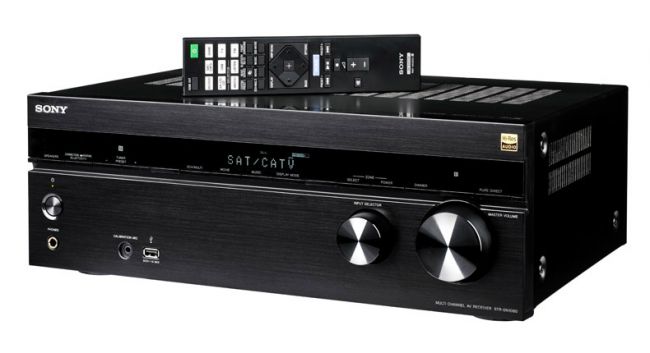
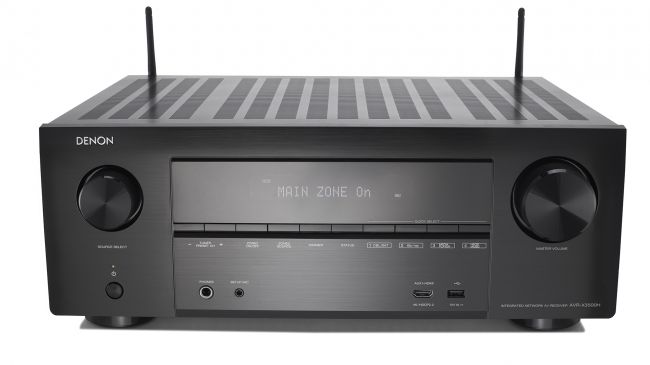
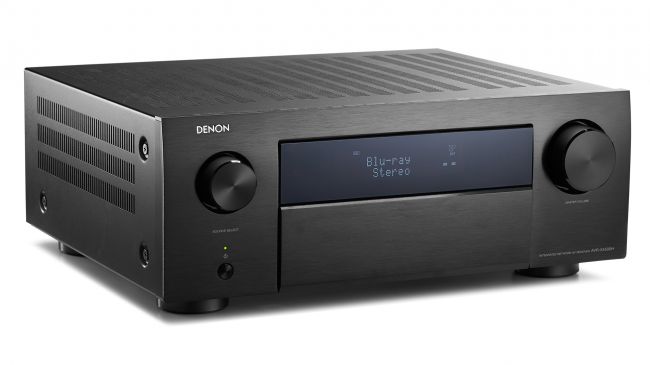
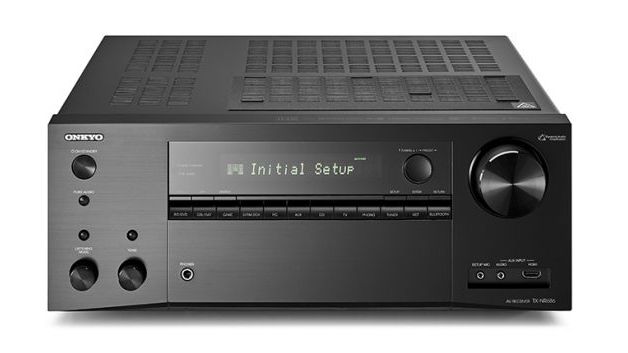
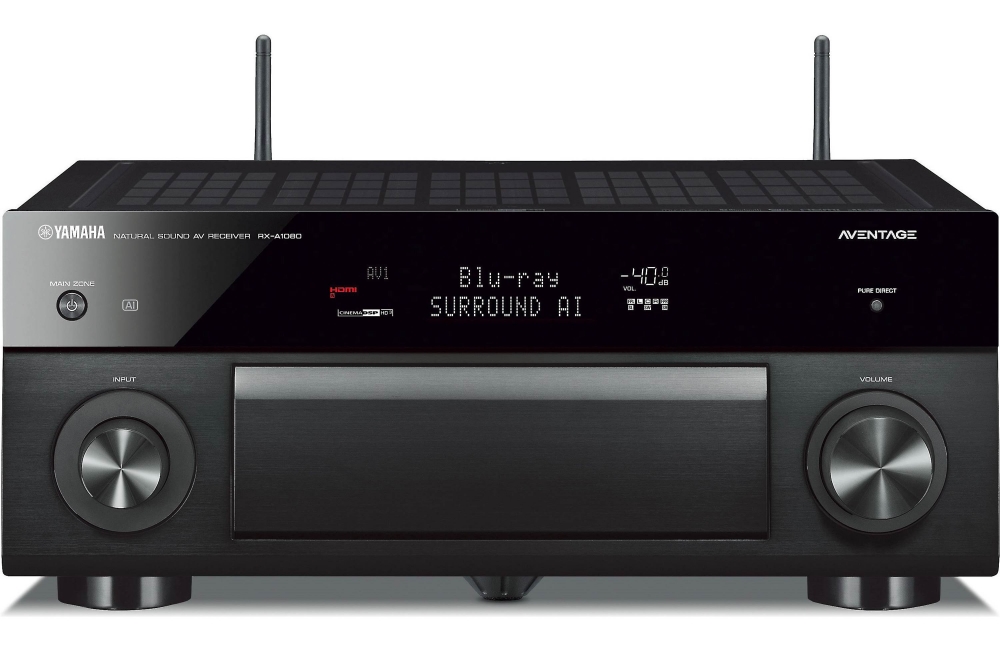
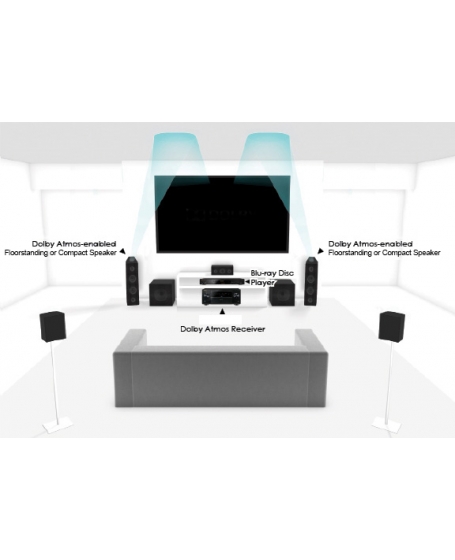
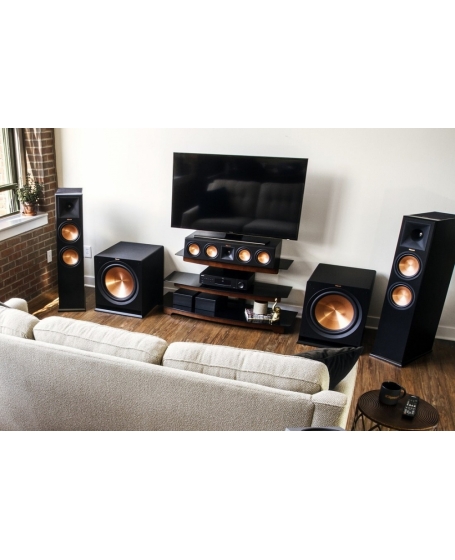 Features Add to Cart Quick View
Features Add to Cart Quick View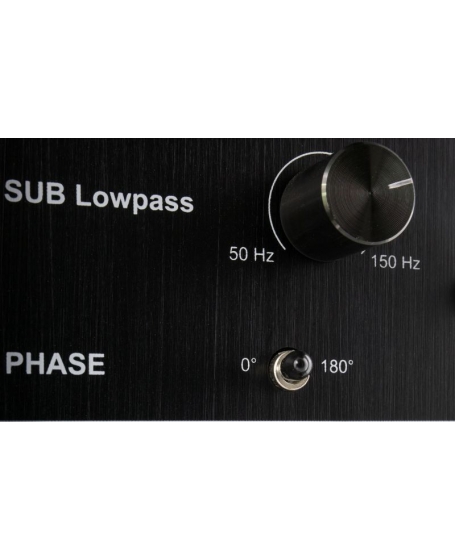
 Features Add to Cart Quick View
Features Add to Cart Quick View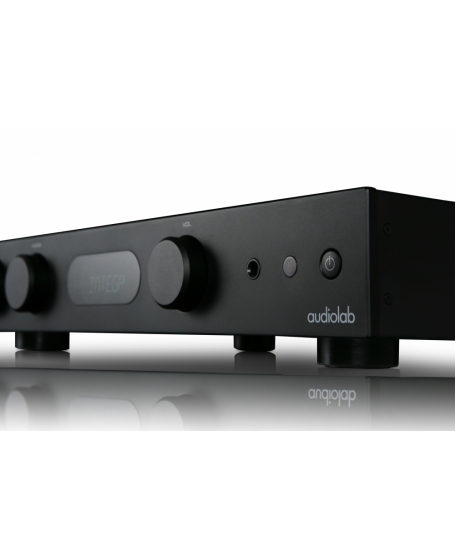
 Features Add to Cart Quick View
Features Add to Cart Quick View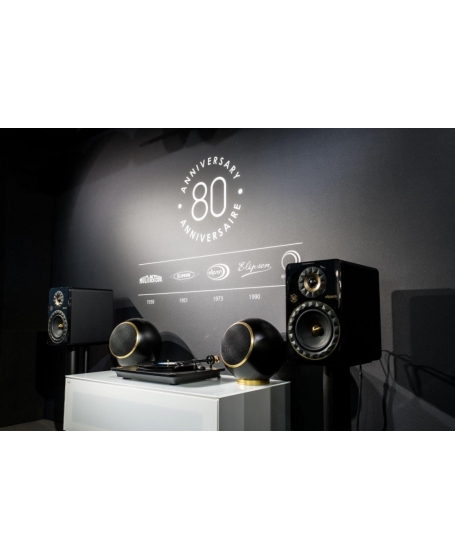
 Features Add to Cart Quick View
Features Add to Cart Quick View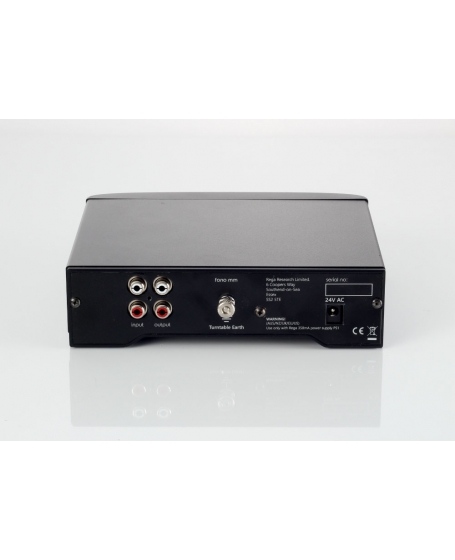
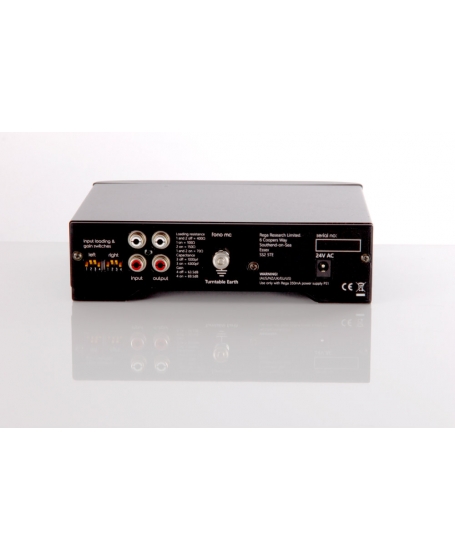 Features Add to Cart Quick View
Features Add to Cart Quick View
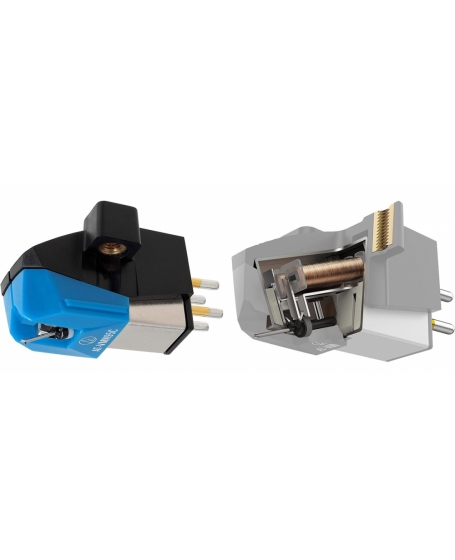 Features Add to Cart Quick View
Features Add to Cart Quick View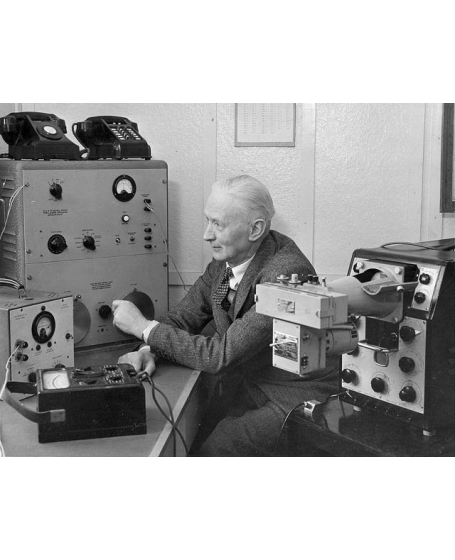
 Features Add to Cart Quick View
Features Add to Cart Quick View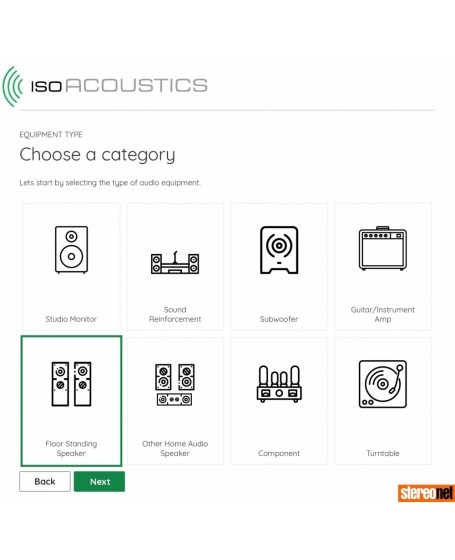
 Features Add to Cart Quick View
Features Add to Cart Quick View